
Difference Between Data Analyst vs. Data Scientist
If you have an analytical mindset and love decoding data to tell a story, you may want to consider a career as a data analyst or data scientist. After all, data analysts and data scientists are two of the hottest jobs in tech (and pay pretty well, too). Harvard Business Review even awarded “data scientist” the title of “sexiest job of the 21st century.”
Data science and analytics (DSA) jobs are in high demand. According to Forbes, “...by 2020, the number of data science and analytics job listings is projected to grow by nearly 364,000 listings to approximately 2,720,000.” They aren’t the easiest positions to fill, either. Forbes goes on to say that DSA jobs “remain open an average of 45 days, five days longer than the market average.”
But what is the difference between data analytics vs. data science, and how do the two job roles differ?
Even people who have some basic knowledge of data science have confused the data scientist and data analyst roles. So, what’s the difference between a data scientist and a data analyst? Both work with data, but the key difference is what they do with this data.
Data analysts sift through data and seek to identify trends. What stories do the numbers tell? What business decisions can be made based on these insights? They may also create visual representations, such as charts and graphs to better showcase what the data reveals.
Data scientists are pros at interpreting data, but also tend to have coding and mathematical modeling expertise. Most data scientists hold an advanced degree, and many actually went from data analyst to data scientist. They can do the work of a data analyst, but are also hands-on in machine learning, skilled with advanced programming, and can create new processes for data modeling. They can work with algorithms, predictive models, and more.
Now that we’ve identified the key differences between a data analyst and a data scientist, let’s dig a bit deeper. As we proceed, we’ll answer the questions:
Data analyst vs. data scientist: what degree do they need?
Data analyst vs. data scientist: what do they actually do?
Data analyst vs. data scientist: what is the average salary?
Data Scientist vs. Data Analyst: What They Do
What Does a Data Analyst Do?
Data analysts sift through data and provide reports and visualizations to explain what insights the data is hiding. When somebody helps people from across the company understand specific queries with charts, they are filling the data analyst role. In some ways, you can think of them as junior data scientists, or the first step on the way to a data science job.
What Does a Data Scientist Do?
At its core, a data scientist’s job is to collect and analyze data, garner actionable insights, and share those insights with their company.
"Doing Data Science," a book based on Columbia University’s Introduction to Data Science class, describes a data scientist as someone who “spends a lot of time in the process of collecting, cleaning, and munging data, because data is never clean.”
The book goes on to explain that once the data is clean, “a crucial part is exploratory data analysis, which combines visualization and data sense. She’ll find patterns, build models, and algorithms—some with the intention of understanding product usage and the overall health of the product, and others to serve as prototypes that ultimately get baked back into the product. She may design experiments, and she is a critical part of data-driven decision making. She’ll communicate with team members, engineers, and leadership.”
So, not only must a data scientist know how to collect and clean data, but they must also know how to build algorithms, find patterns, design experiments, and share the results of the data with team members in an easily digestible format.
Data Scientist vs. Data Analyst: Role Requirements
What Are the Requirements for a Data Analyst?
A typical data analyst job description requires the applicant to have an undergraduate STEM (science, technology, engineering, or math) degree. An advanced degree is a “nice to have,” but is not required. However, the applicant must also have strong skills in math, science, programming, databases, modeling, and predictive analytics. To get an understanding of the role requirements for a data analyst, we looked at job postings on Glassdoor.
At their core, most required:
Degree in mathematics, statistics, or business, with an analytics focus
Experience working with languages such as SQL/CQL, R, Python
A strong combination of analytical skills, intellectual curiosity, and reporting acumen
A solid understanding of data mining techniques, emerging technologies (MapReduce, Spark, large-scale data frameworks, machine learning, neural networks) and a proactive approach, with an ability to manage multiple priorities simultaneously
Familiarity with agile development methodology
Exceptional facility with Excel and Office
Strong written and verbal communication skills
What Are the Role Requirements for a Data Scientist?
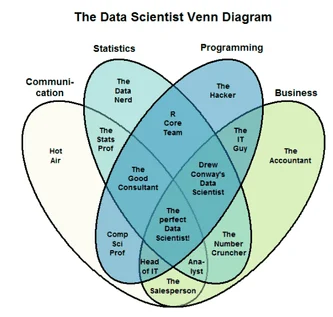
It should come as no surprise that in order to be a data scientist, you need to be well-educated. We mentioned that the majority of data scientists have advanced degrees; in actuality, it’s nearly 90 percent! Industry resource KDnuggets found that 88 percent of data scientists hold a master’s degree and 46 percent have a Ph.D. The most common degrees are in mathematics and statistics (32 percent), followed by computer science (19 percent) and engineering (16 percent).
According to Martin Schedlbauer, associate clinical professor and director of Northeastern University’s information, data science, and data analytics programs, “Data scientists are quite different from data analysts; they’re much more technical and mathematical. They’ll have more of a background in computer science, and most businesses want an advanced degree.”
Glassdoor recommends the following qualifications for a data scientist:
Master’s or Ph.D. in statistics, mathematics, or computer science
Experience using statistical computer languages such as R, Python, SQL, etc.
Experience in statistical and data mining techniques, including generalized linear model/regression, random forest, boosting, trees, text mining, social network analysis
Experience working with and creating data architectures
Knowledge of machine learning techniques such as clustering, decision tree learning, and artificial neural networks
Knowledge of advanced statistical techniques and concepts, including regression, properties of distributions, and statistical tests
5-7 years of experience manipulating data sets and building statistical models
Experience using web services: Redshift, S3, Spark, DigitalOcean, etc.
Experience analyzing data from third-party providers, including Google Analytics, Site Catalyst, Coremetrics, AdWords, Crimson Hexagon, Facebook Insights, etc.
Experience with distributed data/computing tools: Map/Reduce, Hadoop, Hive, Spark, Gurobi, MySQL, etc.
Experience visualizing/presenting data for stakeholders using: Periscope, Business Objects, D3, ggplot, etc.
In addition to understanding data, a data scientist must be comfortable presenting their findings to company stakeholders. Finding someone skilled in mathematics and coding who is also adept at presenting and explaining their discoveries in layman's terms isn’t an easy task, which is why "data scientist" is such a lucrative position.
Data Scientist vs. Data Analyst: Role Responsibilities
What Are the Role Responsibilities of a Data Analyst?
The responsibilities of a data analyst vary depending on the industry, but all require analyzing and interpreting data. To get a better understanding of what else a data analyst does, we looked at job postings on Glassdoor. As you'll see, they focus less on programming skills than data science positions.
At their core, most include:
Conduct consumer data research and analytics
Work with customer-centric algorithm models and tailor them to each customer as required
Extract actionable insights from large databases
Perform recurring and ad hoc quantitative analysis to support day-to-day decision making
Support reporting and analytics, such as KPIs, financial reports, and creating and improving dashboards
Help translate data into visualizations, metrics, and goals
Write SQL queries to extract data from the data warehouse
To further illustrate the variance among data analyst positions, we looked at a few job openings from different fields.
A job posting for a New York City-based data analyst at The New York Times describes the position as:
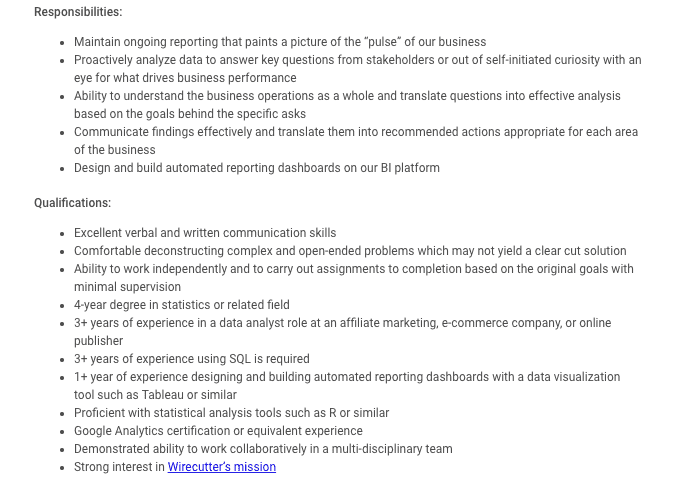
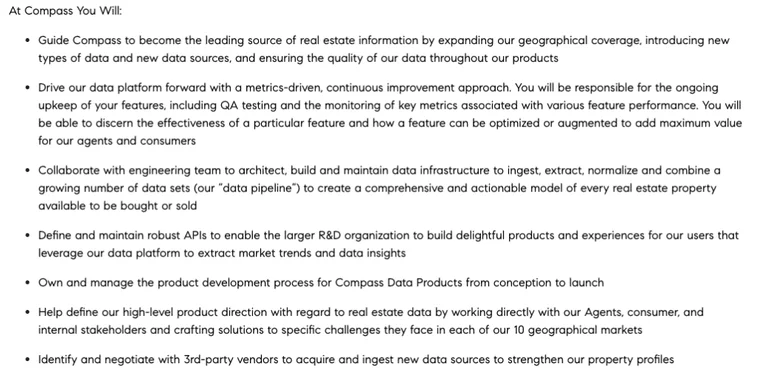
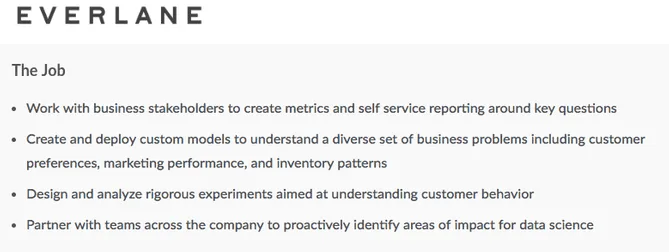
(The salary range is estimated by Glassdoor to be $66,000 - $91,000.)
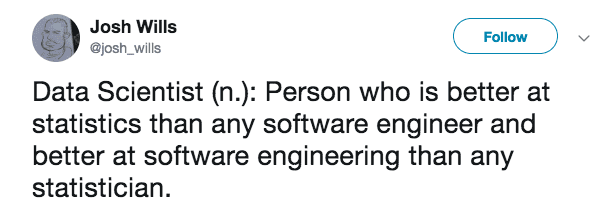
One definition of a data scientist is someone who knows more programming than a statistician, and more statistics than a software engineer. They can store and clean large amounts of data, explore data sets to identify insights, build predictive models, and weave a story around the findings. Many data scientists actually went from data analyst to data scientist.
Glassdoor suggests the following responsibilities for a data scientist:
Mine and analyze data from company databases to drive optimization and improvement of product development, marketing techniques, and business strategies
Use predictive modeling to increase and optimize customer experiences, revenue generation, ad targeting, and more
Develop custom data models and algorithms
Develop processes and tools to monitor and analyze model performance and data accuracy
Assess the effectiveness and accuracy of new data sources and data-gathering techniques
Develop company A/B testing framework and test model quality
Coordinate with different functional teams to implement models and monitor outcomes
A job posting for a San Francisco-based data scientist role at Facebook describes the role responsibilities as:
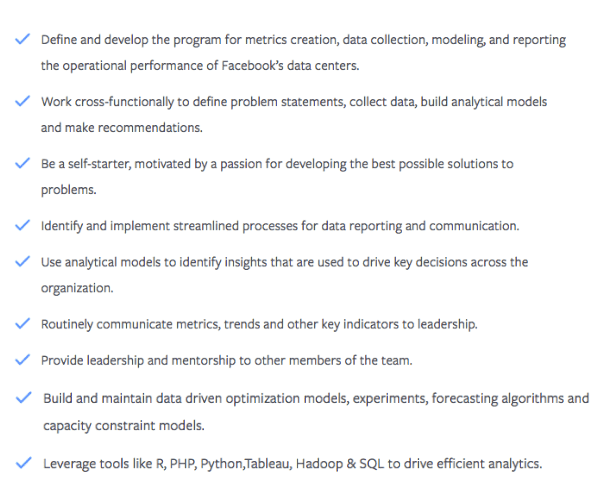
(Glassdoor estimates the salary for this type of role to be $168,000.)
A job posting for a New York City-based data scientist at IBM states the responsibilities as:
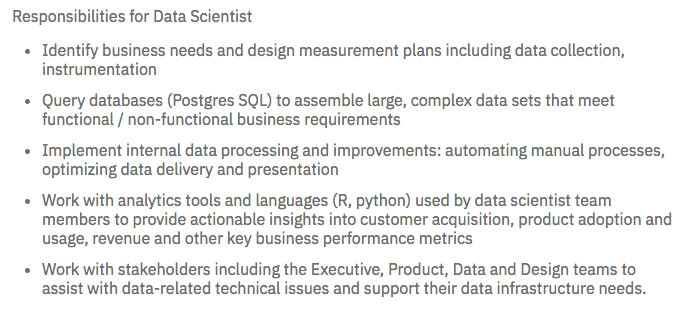
(Glassdoor estimates the salary for this role to be $138,000.)
Data Scientist vs. Data Analyst: How Much Do They Earn?
How Much Does a Data Analyst Make?
A recent study by PWC estimated that there will be 2.7 million job postings for data analysts and data scientists by 2020. The study goes on to say that candidates must be “T-shaped,” which means they must not only have the analytical and technical skills, but also “soft skills such as communication, creativity, and teamwork.”
Finding someone who has the ideal blend of right-brain and left-brain skills is not an easy task, which is one reason why data analysts are paid well. According to Glassdoor, the average salary for a data analyst is $84,000. Like all jobs, however, data analyst salaries vary by industry.
How Much Does a Data Scientist Make?
We previously gave some examples of what a data scientist in Silicon Valley and New York City can make, and it’s not far from the average. According to Glassdoor, the average annual salary for a data scientist is $162,000.
Becoming a data scientist isn’t easy, yet the demand for data science skills continues to grow. According to LinkedIn’s August 2018 Workforce Report, “data science skills shortages are present in almost every large U.S. city. Nationally, we have a shortage of 151,717 people with data science skills, with particularly acute shortages in [tech hubs such as] New York City, the San Francisco Bay Area, and Los Angeles.” Given the demand, it’s not surprising that it’s such a lucrative career.
Final Thoughts
To summarize the questions we posed at the beginning:
Data analyst vs. data scientist: do they require an advanced degree?
A data scientist does, but a data analyst does not.
Data analyst vs. data scientist: what do they actually do?
A data scientist works in programming in addition to analyzing numbers, while a data analyst is more likely to just analyze data.
Data analyst vs. data scientist: which has a higher average salary?
A data scientist has a higher average salary.
More work goes into becoming a data scientist than a data analyst, but the reward is a lot greater as well. If you excel in math, statistics, and programming and have an advanced degree in one of those fields, then it sounds like you’d be a perfect candidate for a career in data science.
However, if you are early in your career and are great with numbers but still need to hone your data modeling and coding skills, then you’d be better suited for a job as a data analyst. You can think of a data analyst as a stepping stone to becoming a data scientist, if that is your final goal.
Both data analytics and data science are growing and lucrative fields, and you can’t go wrong with either. Looking to prepare for data analytics roles? Check out University of North Florida, Division of Continuing Education’s Data Analytics Career Track. You’ll learn both the technical and business thinking skills to get hired!
If you have more experience or want to move from data analyst to data scientist, consider University of North Florida, Division of Continuing Education’s Data Science Career Track. It’s a self-guided, mentor-led bootcamp!
Learn online from an industry-driven curriculum for a career in data.
